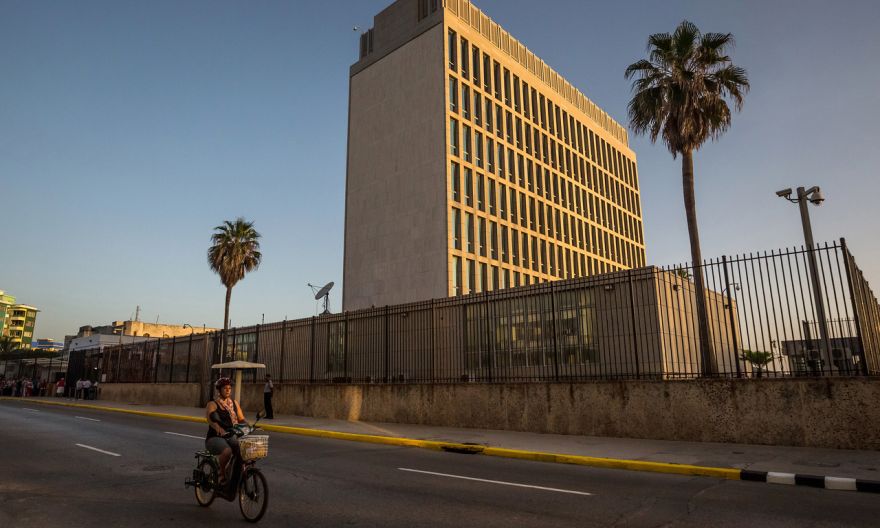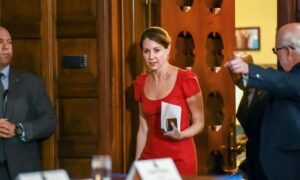Mystery attacks on US diplomats leave scores of victims but still little evidence

WASHINGTON (NYTIMES) – President Joe Biden’s top aides were told that experts studying the mysterious illnesses affecting scores of diplomats, spies and their family members were still struggling to find evidence to back up the leading theory, that microwave attacks are being launched by Russian agents.
The report came in an unusual, classified meeting called on Friday (Aug 6) by the director of national intelligence, Avril D. Haines, according to several senior administration officials who spoke on the condition of anonymity.
The purpose of the meeting was to assess the investigations and efforts to treat victims of the so-called Havana syndrome – the unexplained headaches, dizziness and memory loss reported by scores of State Department officials, CIA officers and their families.
While Biden has said almost nothing publicly about the episodes, the National Security Council has begun an urgent effort to address the issue, and two separate task forces are now in operation, one investigating the cause and led by the CIA and another focused on finding commercial technology that could detect or block attacks.
The subject of the Friday meeting of the Joint Intelligence Community Council was confirmed Sunday evening by Timothy Barrett, the assistant director of national intelligence for strategic communications.
“This is a top priority for the intelligence community,” he said, “and we are supporting the NSC-led effort to get answers, take care of our people and prevent future incidents.”
The meeting included Secretary of State Antony Blinken; Attorney-General Merrick Garland; CIA Director William Burns; and FBI Director Christopher Wray.
The high-ranking nature of the session was an indication of how quickly the attacks, which date to 2016, have risen from a medical mystery to an urgent national security issue.
Biden administration officials say they were shocked at how disorganised the government response was over the past four years, in part because there was no central way for departments to share reports of the episodes and because many of the targets were intelligence officers whose identities and locations could not be revealed.
A December 2020 study of the causes by the National Academy of Sciences concluded that microwave attacks were most likely the cause, but Biden administration officials say the group had no access to classified information.
Soon after taking office Biden’s national security adviser, Jake Sullivan, designated the Security Council’s senior director for intelligence to organise a cross-government response, and outside experts with security clearances were called in to start new studies.
At the meeting called by Haines on Friday, the expert groups reported that the leading theory remained that microwave beams were aimed at government buildings and residences, either as part of an espionage effort or as a deliberate attempt to hit US officials with a debilitating, invisible and hard-to-trace weapon.
“It is possible that this began as an espionage effort that turned into a stealthy means of attack,” one official familiar with the investigations said. The official noted that microwave technology had been used over the years by US adversaries to try to re-create documents by detecting the emissions of typewriters and then computer keyboards, and later to pick up cellphone communications.
“But the frustrating part is that there is still no definitive conclusion,” the official said, “that would enable the president to call out the Russians, the way he has with cyber-attacks.”
The administration, however, is feeling pressure to show that it is actively searching for the source of what it still refers to as “anomalous health incidents,” after several victims complained, starting in the Trump administration, that their accounts were being dismissed and that medical help had been slow.
Biden made a rare public reference to the issue in a speech to intelligence officials late last month. He said the administration is “coordinating a government-wide effort to respond to these incidents, because this challenge demands that departments and agencies, including the entire intelligence community, work together with urgency.”
The State Department has been a particular hotbed of discontent, especially in recent months, as Vienna has become the latest centre of reports of symptoms.
Some officials have been reluctant to take up posts in places where the episodes were reported, or bring their families, because some of the suspected attacks have been directed at residences.
On Thursday, Blinken said in a letter to all State Department employees that he had “heard the growing concerns from many of you about the Unexplained Health Incidents that have afflicted US government employees and their families.”
He added that “this is a top priority for me, the State Department and leaders across the US government.”
He wrote that two senior officials – Brian P. McKeon, a deputy secretary of state, and Ambassador Pamela Spartan – were leading a State Department task force that has begun to hold town hall-style meetings in embassies that were suspected targets.
There has been a similar effort underway at the CIA, where Burns, who met with victims on his first day on the job, recently told NPR that he thought about 100 officers and their families had been afflicted.
It “is real and it’s serious,” Burns said in the interview. He said only a few powers had the technology and the reach to conduct attacks around the globe – since the initial reports in Cuba, they have ranged from Europe to China to Washington – but Burns hesitated to say that the government of Vladimir Putin was responsible.
“Could be, but I honestly cannot – I don’t want to suggest until we can draw some more definitive conclusions who it might be,” Burns said. “But there are a number of possibilities.”
Investigations have attributed some of the reports to other causes. This spring, for example, US military personnel operating in Syria suspected that a sudden illness may have been caused by a Russian aircraft that could have directed microwaves at them; it was later determined they had food poisoning. But studies of victims elsewhere concluded that there was evidence of traumatic brain injury, though without the kind of impact normally associated with concussions.
Throughout the Cold War, Vienna was central to East-West diplomacy. Officials say they do not think recent reports of attacks there, which are still unconfirmed, are related to that, though the city has been a site of negotiations over resuming the Iran nuclear deal.
Some officials suspect that along with Russia, Iran may be responsible for some attacks, but there is also a focus on Cuba, China and other nations.
The mystery has been compounded by the fact that some attacks took place on Russian and Chinese soil, including against a CIA officer in Moscow four years ago and a number of State Department officials in Guangzhou, China, in 2018.
Speaking for the White House, a senior administration official said the National Security Council was “leveraging a broad array of scientific and medical expertise from within the government and outside of it to explore multiple hypotheses and generate new insights” into the episodes to “protect our personnel and identify who or what is responsible.”
One element of that effort, officials say, is to develop portable sensors that could be widely distributed to detect attacks.
But it is hard to ensure that the sensors will work, one official said, without any certainty that microwaves are the cause of the unexplained illnesses. And even if they are the cause, the sensors would have to be able to pick up signals across a large part of the electromagnetic spectrum.



